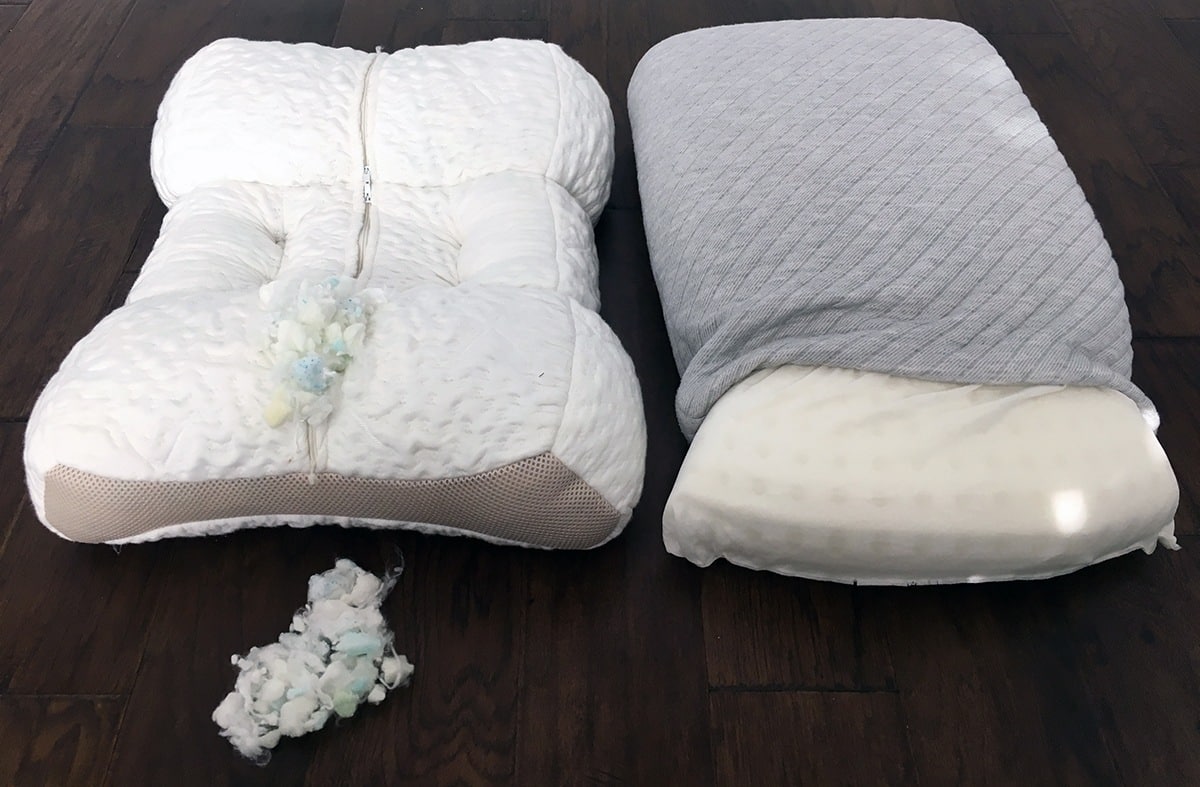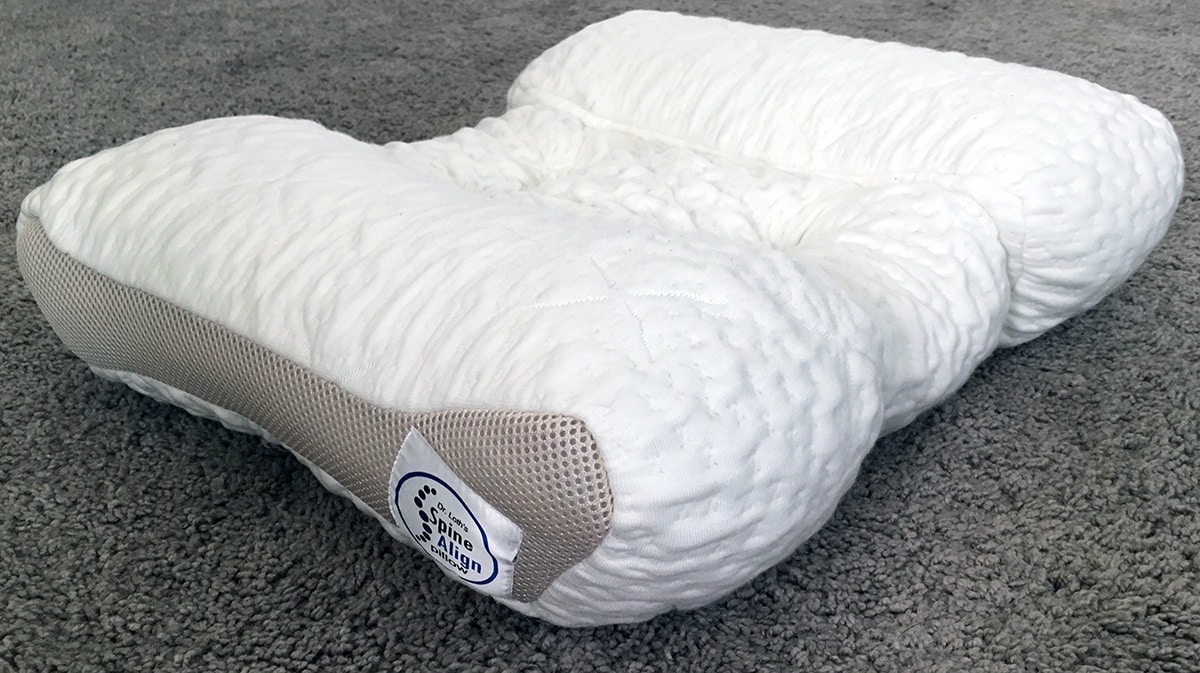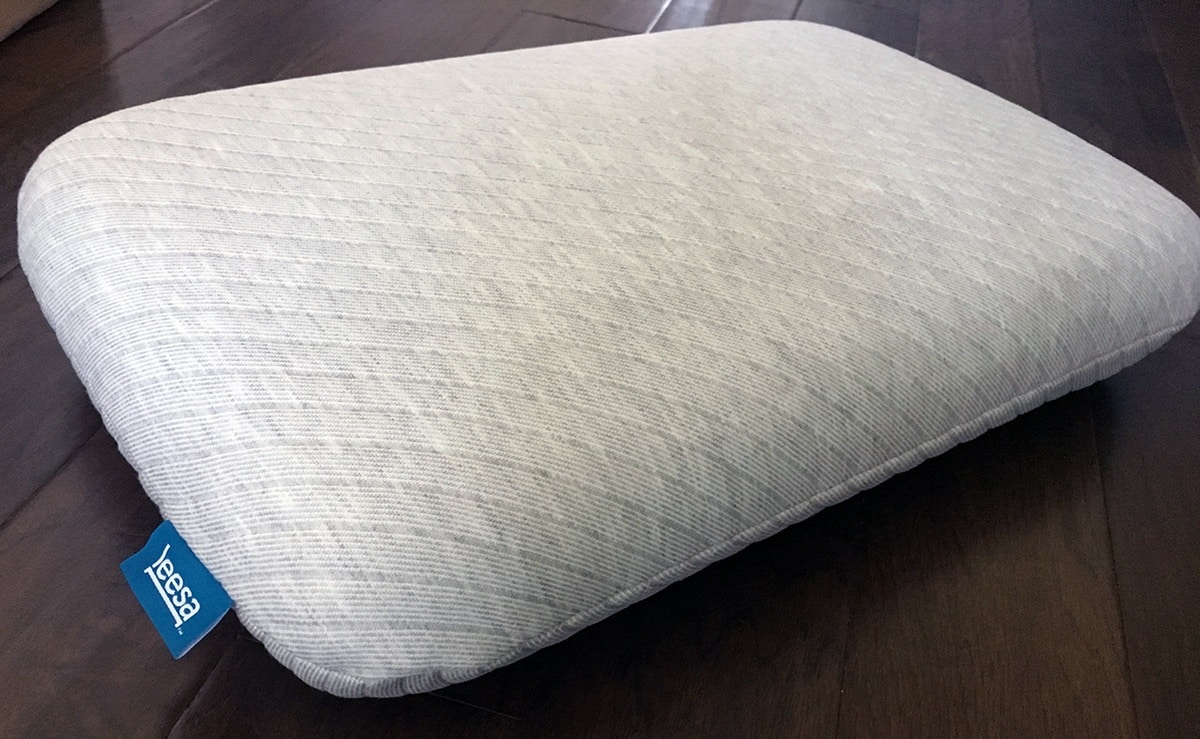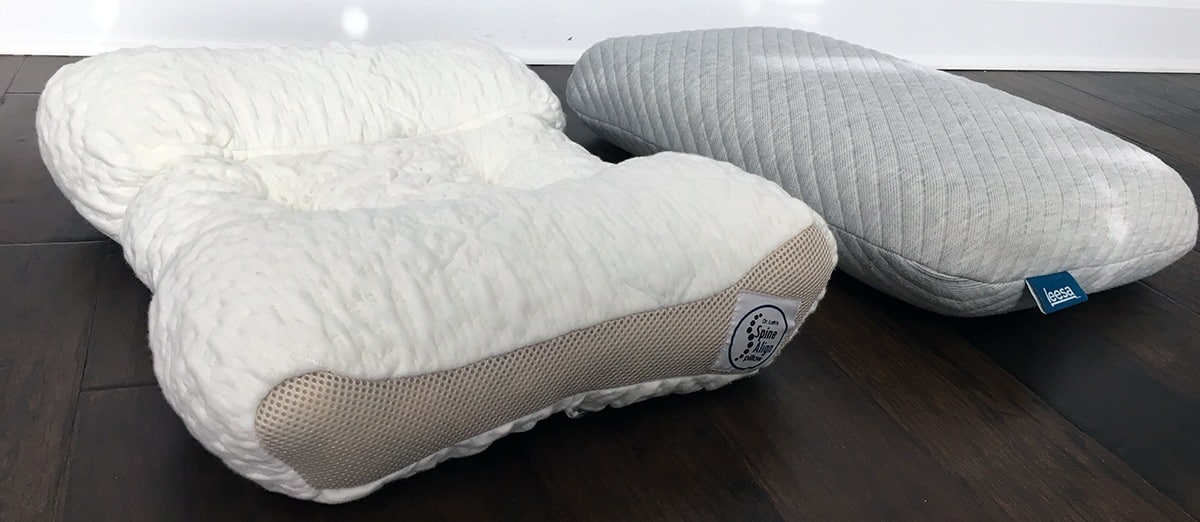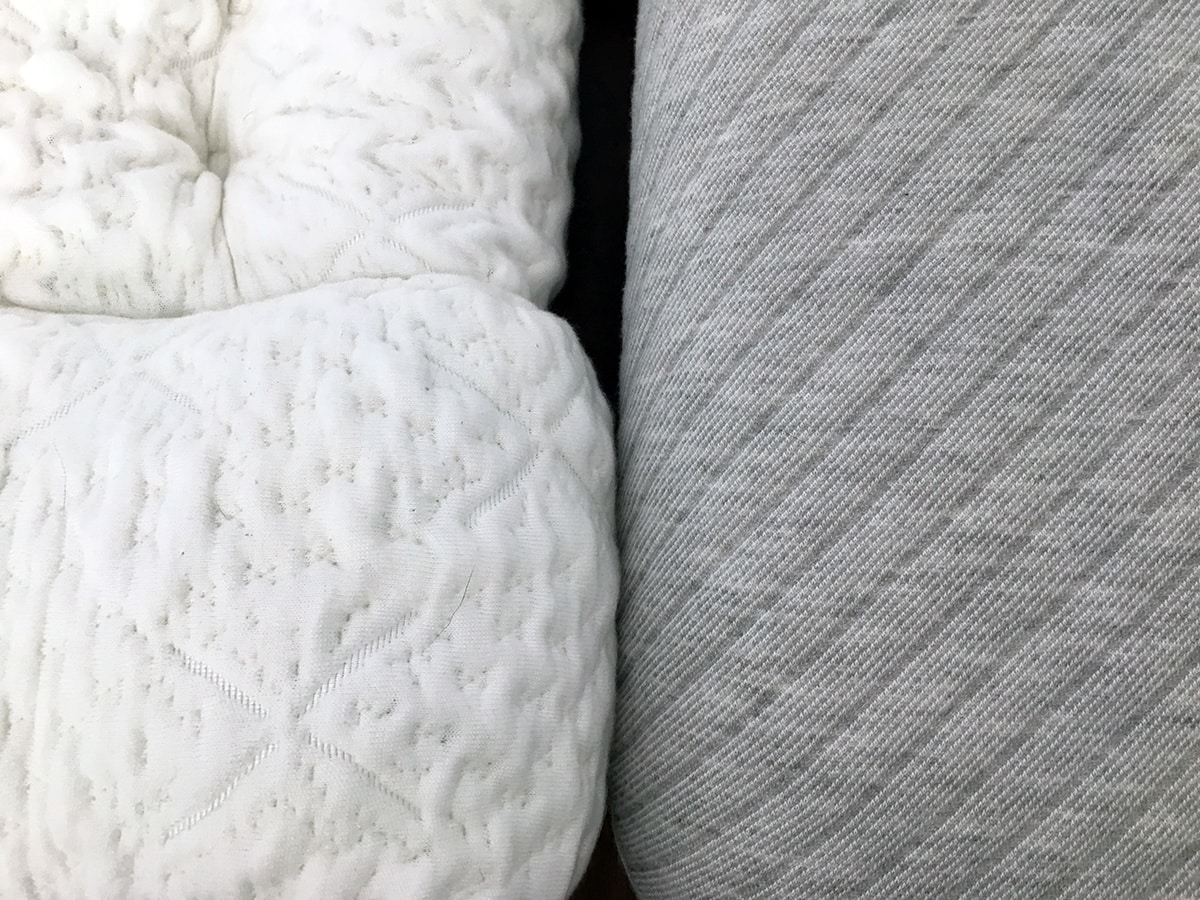Neither the SpineAlign pillow nor the Leesa pillow are typical run of the mill foam pillows. In reality, both offer unique foam components that bring enhance the performance of each in subtle ways. Yes, they have several features in common but their differences help them to stand apart from the crowd.
To learn more about what these similarities and differences are, plus who will truly enjoy these pillows, read on for my full SpineAlign vs Leesa Pillow comparison.
SpineAlign vs Leesa Pillow: Video Overview
Top Similarities
- Foam-filled (or partially filled)
- Hypoallergenic
- Trial periods available
- Made in the USA (some with imported materials)
- Both could be a good fit for side sleepers
Key Differences
SpineAlign
- Shape: Contour pillow
- Size approximately 23” x 17” x 6”
- Two outer chambers for side sleeping and a middle chamber for back sleeping
- Customizable to fit your correct posture in both the back and side sleeping positions
- Cover: Soft Tencel blended fabric with strips of mesh built in the sides (37% Lyocell – also called Tencel, 61% Polyester and 2% spandex)
- Filling: blend of shredded internal fill (foam and fiber) accessible through zippers on the back
- Has “one size fits most” design
- Fits in a queen size pillowcase
- Do not wash the pillow; spot clean only
- Made in the USA (with imported materials)
- 90-night trial period
- Price: $129 (One Size)
Check out the complete Dr. Loth’s SpineAlign pillow review, here.
Leesa
- Traditional Shape
- Standard size: 18” x 26” x 5” and King size: 18” x 33” x 5”
- Filling: 100% Polyurethane Foam (ventilated)
- Cover: 70% Polyester, 17% Viscose, 13% Nylon
- Removable cover that is washable and dryer friendly
- Designed for all styles of sleeper and all body types
- Price: $75 for Standard size, $95 for King size
- Made in the USA
- 100-night trial period
- Included in Leesa’s One-Ten Program, one pillow will be donated for every ten sold
Read the full Leesa pillow review, here.
Who Might Choose SpineAlign…
- Prefer something created by a medical professional. The full name of this particular pillow is Dr. Loth’s SpineAlign pillow because it was designed by Dr. Jason Loth, a sports chiropractor, with more than 17 years of experience in the field. He reportedly designed the pillow with features intended to help sleepers find their ideal neutral spinal alignment.
- Those who want to adjust the pillow. Each compartment/chamber within the pillow has a zipper that allows sleepers to add or remove as much of the foam/fiber filling as desired. Back sleepers will want to adjust the middle section and side sleepers will want to adjust the edges (or both if you sleep in both positions).
Who Might Choose Leesa…
- Those who want size options. The Leesa pillow comes in both Standard and King sizes, while the SpineAlign comes in only one size at the time of this comparison.
- People who prefer the feel of latex foam. The proprietary Avena foam inside the Leesa pillow has similar characteristics to a traditional latex foam pillow. In particular, its quick response overall bouncier/resilient feel, especially compared to a classic memory foam or a down alternative. It also won’t fall flat or change shape overnight.
Check out the latest deals on the Leesa Pillow, here!
Who Could Choose Either Pillow…
- Side sleepers. Based on my experience with these pillows, both are excellent and appealing options for side sleepers. The outer chambers of the SpineAlign are designed specifically for side sleepers and I thought the support and firmness of the Leesa pillow particularly matched the needs of a side sleeper well.
RELATED: Best Pillow for Side Sleepers
Overall
Side sleepers will be equally happy with either the SpineAlign or the Leesa pillow. Those who favor adjustability and like the idea of a foam and fiber filling combination should look to the SpineAlign (as should some back sleepers). Meanwhile, the latex foam-like feel of the Leesa will appeal to side sleepers who want the support of foam but oppose the classic sinking feel of memory foam.
Both pillows come with generous trial periods – 90 and 100-nights – giving sleepers ample opportunity to discover which one is the best fit.

